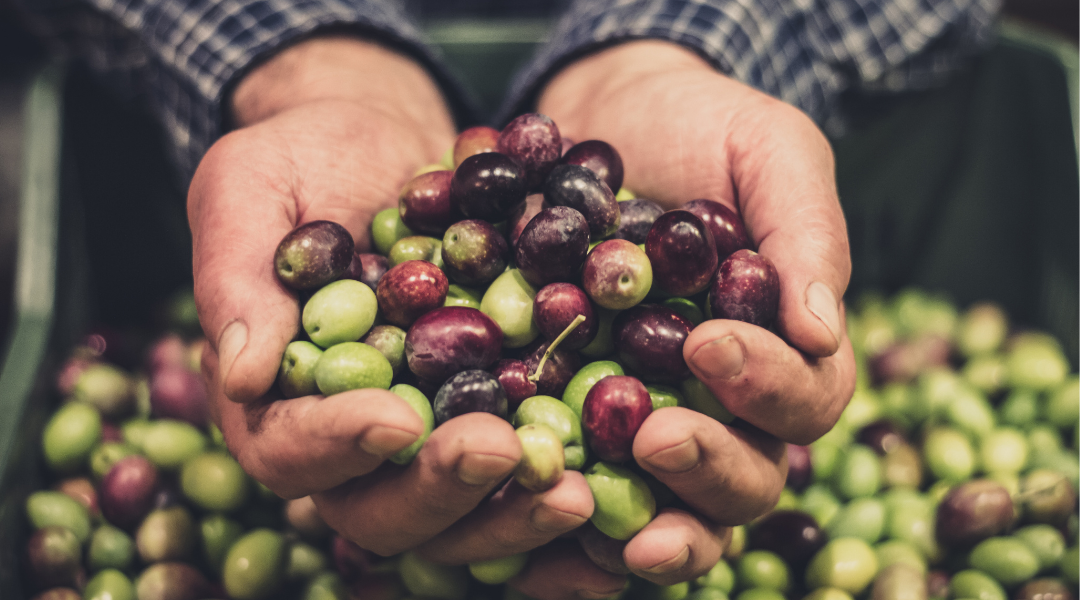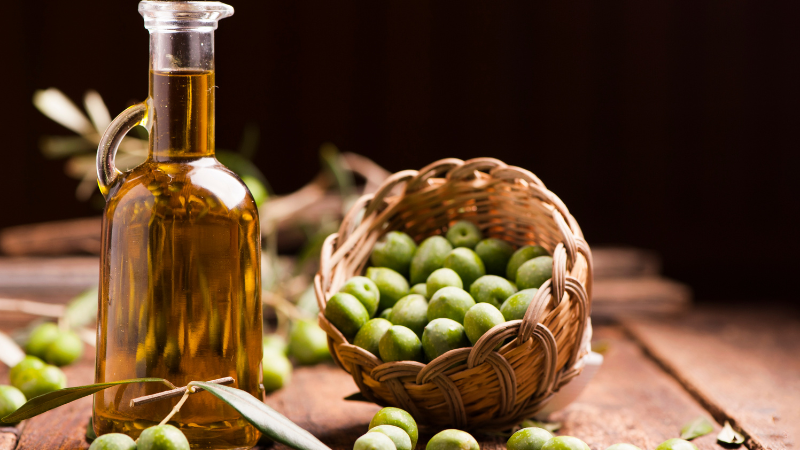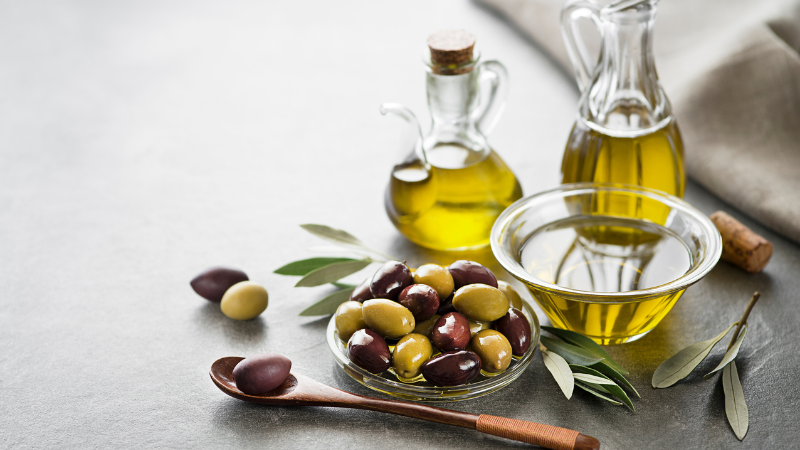How Is Olive Oil Made?
Olive oil is one of the most popular and widely believed to be the healthiest oils for preparing and cooking food. Most people have used it and know what it tastes like. You may have your favourite recipes using it and even your favourite brands.
As popular as it is, though, the process involved in actually transforming olives into that oil that we are all familiar with, for many people, is a mystery. Do you know how olive oil is made? You are likely visiting this post because you want to find out.
The simplest way to explain how olive oil is made would be that fresh olives are harvested, crushed into a paste and then the natural oils are separated from the pulp.
That simple explanation, while giving some insight into the olive oil production process, misses out on some of the most fascinating stages. Let’s look at it in greater detail.
Where are olives grown?
As olive oil is an integral part of Mediterranean cuisine, it’s unsurprising that the majority of olives in the world are grown in countries with coasts along the Mediterranean Sea.
Countries like Greece, Italy and Spain lead the world’s olive oil production.
Thanks to the temperate climates in other parts of the world too, though, you will also find olive groves in the United States, Chile, Brazil, and Argentina.
When are olives harvested?
If they are maintained and looked after properly, olive trees will continue to produce fruit every single year without fail.
Traditionally, harvest season starts in August and runs through to December.
Interestingly, there is no difference between green olives and black olives. They both come from the same trees and the colour is used to determine their ripeness. Green olives are picked earlier in the season, while black olives are picked close to the end of the harvest season.
More than just the colour is important when it comes to olive harvesting, as the maturity when they are harvested is crucial to the quality of olive oil that is produced.
For example, when harvesting green olives, if it is done during that peak period of ripeness, around 2 to 3 weeks towards the end of August and start of September, they have lively and strong flavours and higher levels of polyphenols than any other point in the process.
If left to ripen much longer, however, the flavours start to diminish, as do levels of the healthy compounds. With that degradation in mind, the best quality extra virgin olive oil is always derived from the fruits harvested at the earliest point in the season.
While the above is true, there is also something of a trade-off when olives are harvested early for peak ripeness – those olives contain less oil. Oil is produced as the olive matures.
In the interest of having a large yield of fruits, therefore, many olive oil producers will allow their lower quality olives to mature beyond peak ripeness.
While it means more oil can be extracted from each fruit, it reduces the nutrient content and flavour of that oil.
Processing the olives
Once olives are harvested, there is a race against time to prevent them from losing their freshness.
The leading producers in the modern olive oil industry have developed fast and efficient collection and transportation methods that mean they can start extracting the oil within just three hours from when they were harvested.
These methods stop the olives from degrading too much and limit how much exposure they have to light, oxygen and heat.
Olive processing begins when they reach the processing facility when the branches and leaves are removed by machine or hand.
Then, the olives are washed to get rid of any debris and dirt. Once cleaned, the olives are placed in the special milling machine that crushes the olives, pits, and fruit into a thick paste.
Malaxation
The next step is the malaxation process. As the makeup of olives consists of 60% oil, the resulting paste from the milling process has a thick consistency similar to porridge. Therefore, malaxation involves water being added to the olive paste.
Malaxation means mixing and lasts roughly 20 to 40 minutes, during which small oil droplets combine. This makes it much easier to extract the oil during the next step in the process.
Olive Oil Pressing – The Extraction Process
Just as olive oil mills were made from granite in the past and have been replaced by stainless steel mills, changes have been made to olive oil pressing and extraction through the years.
Traditionally, after malaxation, the olive paste was spread into thin layers between burlap bags and was stacked up and then a mechanical press would compact the olive paste stack to collect the oil squeezed from it.
This method did not require any heat, which is where the term cold-pressed olive oil came from. Although the olive oil extraction methods have changed significantly, the term cold-pressed is still used.
The olive oil extraction process that most modern olive oil producers use nowadays involves the olive paste being loaded into a huge centrifuge so it can be spun around until all the oil is extracted and collected in stainless steel containers.
Why and How Are Refined Olive Oils Made?
While the majority of olive oil producers follow the same process, the next part of olive oil production is most critical to the finished product.
There are two options – the olive oil can be packaged unrefined and natural or it can be put through some kind of refining process. Olive oil refining is what makes extra virgin olive oil different from standard olive oil.
When olive oil is made with the highest quality olives harvested at peak ripeness, the unrefined oil is full of natural flavour, nutrients and polyphenols. That oil is referred to as virgin olive oil. To gain the extra virgin olive oil labels, it has to be put through a series of chemical and physical tests to determine its actual quality.
Oil produced from lower quality olives or those harvested later in the season is normally put through chemical refining or heat refining to eliminate any unwanted solids or flavours that may remain during cold pressing.
This results in olive oil with a very bland flavour and fewer health benefits.
Packaging and Bottling
After the extraction process, the olive oil is then transferred into stainless steel containers to protect it from light, oxygen and heat, before it is bottled up to be sold.
Summary
We hope you found this explanation of how olive oil is made interesting. As you can see, a lot of work goes into olive oil production. From tree to bottle, there are many steps olive oil producers have to take to extract the oil effectively.
Making high quality olive oil in particular is quite a skilled process. From picking the olives at the right time to extracting the oil in a way that retains the flavour, considerable thought and effort goes into making high quality olive oil.



